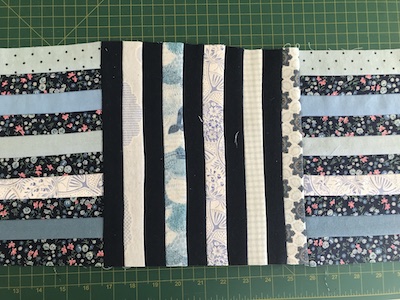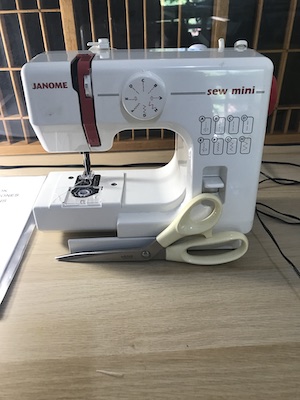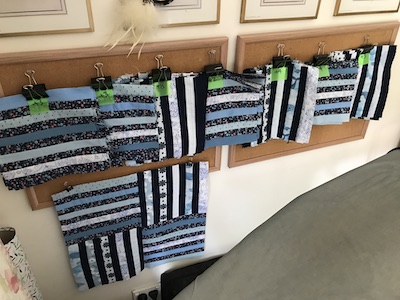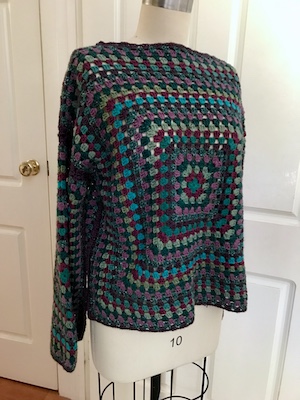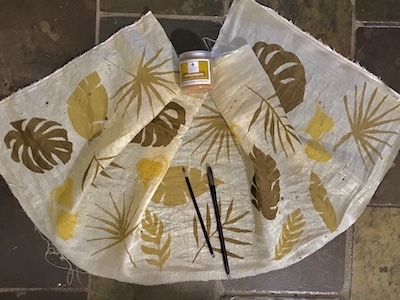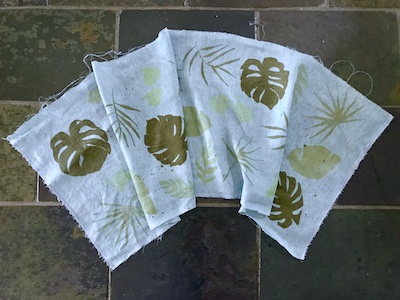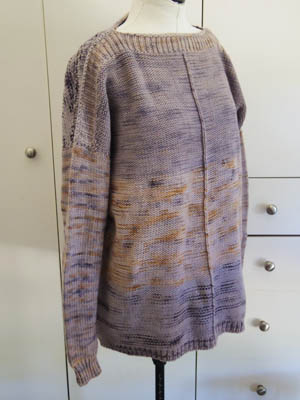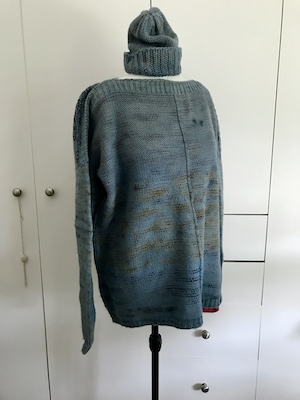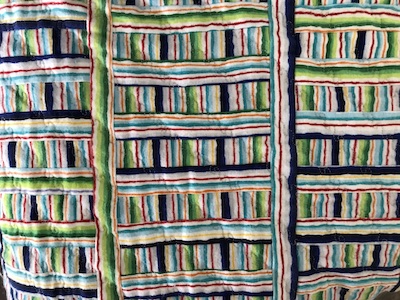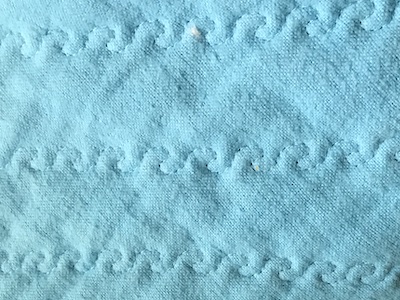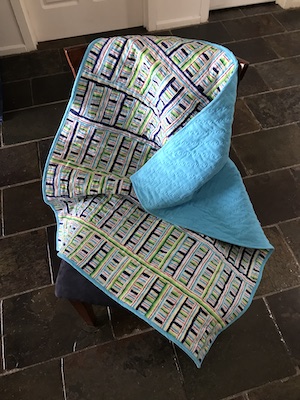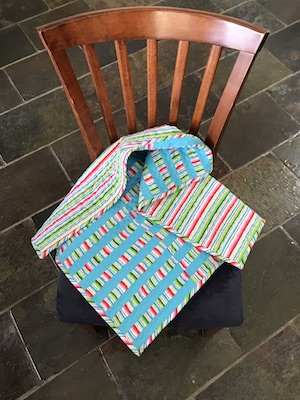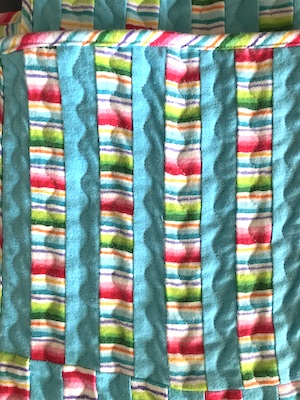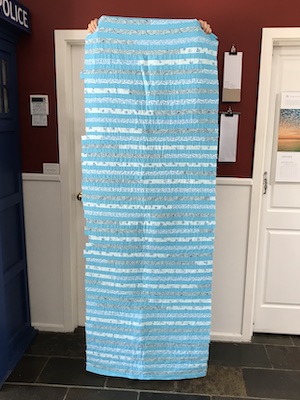Sewing the squares for this was so much fun – the most enjoyable technique I’ve used so far in this Summer of Quilts.
A friend decided to have a sewing day, so I wound up sewing squares every day for a week to get them done in time for it. I figured it would be a quick and easy task to sew the squares together, but it turned out taking the paper off the back is quite time-consuming, so I only got half of the top constructed.
The next day I was tired, and the next week was really busy, and then I was really, really tired. After a week I hadn’t touched the quilt except to remove the rest of the paper. Eventually I did get the top finished. I cut the backing and batting and made the sandwich.

But then the shop that I had ordered the rainbow topstitching thread from rang to say it wasn’t in stock so they’d have to order from the supplier, which meant it wouldn’t arrive for a few weeks. I put the quilt aside and returned to the Blue Quilt.
Well, three weeks later there was no sign of the thread, so I gave up on that and started looking at other ideas. In the interim, I had discovered that the quilt had relaxed and distorted, pulling in at some corners and protruding at others. I resewed the protruding ones to get them to sit flatter, but I don’t have room to let out the seams where the corners pull in. It looked like machine quilting would be very troublesome.
So I decided I would hand quilt it. Which I expect will be slow work, but maybe, hopefully meditative. But at least I don’t have to wait for the Juki to come back from the repairer do it.

